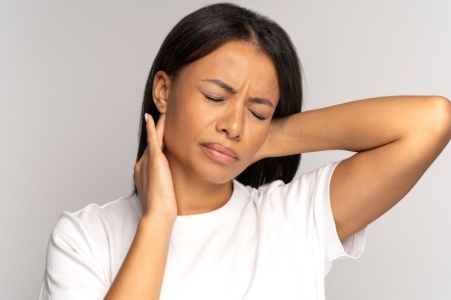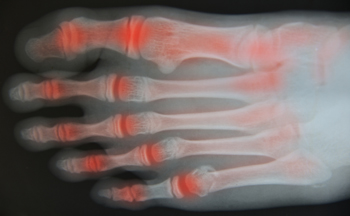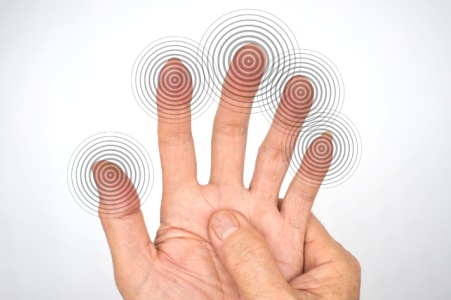Items filtered by date: December 2024
Relieving Migraine Headaches Naturally

A migraine headache is a severe and recurring type of headache that often causes intense throbbing pain, usually on one side of the head. It can be triggered by stress, lack of sleep, poor posture, certain foods, or hormonal changes. Migraines may also cause sensitivity to light or sound, nausea, and visual disturbances. Chiropractic care can help reduce the frequency and intensity of migraines by improving spinal alignment, relieving tension in the neck and shoulders, and promoting better nerve function. Through gentle adjustments and personalized care, a chiropractor helps restore balance to your nervous system. If migraines are disrupting your daily life, it is suggested that you consult a chiropractor who can provide natural relief solutions.
Chronic Headaches
Chronic headaches can disrupt daily life, but chiropractic care offers an effective, holistic approach to managing and relieving headache symptoms. Chiropractors assess spinal alignment, posture, and muscle tension, which often play a role in chronic headaches. By addressing these factors, chiropractic care aims to reduce headache frequency and intensity.
A Chiropractor’s Approach
A chiropractor’s approach typically includes spinal adjustments, which help alleviate tension in the neck and upper back that may contribute to headaches. Chiropractic care may also incorporate lifestyle advice, including guidance on ergonomics, stress management, and targeted exercises tailored to reduce headache triggers. Regular adjustments provide a preventive approach, supporting overall spinal health and minimizing factors that can cause or worsen headaches.
Why Is Regular Chiropractic Care Important for Headache Relief?
Ongoing chiropractic care can relieve tension and prevent misalignments, both of which are common headache triggers, allowing patients to achieve long-term relief.
When Should You Consider Chiropractic Care?
Patients with frequent headaches should consider regular chiropractic visits, often recommended every few months or as advised, to support effective headache management.
If you have any questions, please feel free to contact our office located in Omaha, NE .
Chronic Headaches
For people living with chronic headaches, chiropractic care offers a holistic and drug-free path to relief. Many chronic headaches, particularly tension headaches and migraines, have origins in spinal issues or muscle strain, especially around the neck and upper back. Chiropractors address these physical causes directly, often resulting in fewer and less severe headaches over time.
A typical chiropractic approach involves spinal adjustments that aim to improve alignment and reduce nerve irritation. Misalignments in the spine, especially in the cervical, or neck, area, can create tension and trigger headaches. By realigning the spine, chiropractic care helps reduce pressure on nerves and improve blood flow, which can significantly ease headache symptoms.
Chiropractors also incorporate additional therapies to support headache relief. These may include soft tissue therapy, targeted stretches, and exercises that strengthen supportive muscles around the spine. Lifestyle recommendations, such as improving posture, optimizing work ergonomics, and managing stress levels, are often part of a comprehensive chiropractic plan for headache management.
Chiropractic care addresses the structural and muscular sources of many headaches, leading to long-term improvement. It provides a natural alternative or complement to medication, helping patients manage their symptoms more sustainably. Regular visits can enhance spinal health and contribute to an overall decrease in headache frequency and severity, making daily life more comfortable.
For more information or to discuss if chiropractic care is suitable for you, contact Steskal Chiropractic & Wellness Center at Omaha, NE .
Stop Headaches Naturally

Headaches affect millions of people and can range from occasional tension to chronic pain. Often linked to stress, posture, or muscle strain, headaches can disrupt work and daily life. Non-invasive and drug-free care may help reduce frequency and intensity.
Contact us today for effective headache treatment.
What Causes a Pinched Nerve?

A pinched nerve in the upper back occurs when surrounding tissues such as muscles, bones, or tendons apply pressure on a nerve, disrupting its normal function. This condition can lead to sharp or aching pain that radiates through the back, along with numbness, tingling, or muscle weakness. Although often linked to poor posture or repetitive movements, underlying conditions like arthritis may also contribute. A chiropractor can help by identifying the source of compression and use gentle spinal adjustments to relieve pressure, restore alignment, and improve mobility. If you are experiencing persistent discomfort or nerve symptoms, it is suggested that you schedule an appointment with a chiropractor who can provide effective, natural relief solutions.
Pinched Nerve
A pinched nerve occurs when surrounding tissues, such as bones, muscles, or tendons, apply excessive pressure on a nerve. This condition can cause pain, numbness, tingling, or weakness, often in the neck, back, or limbs. Everyday activities, poor posture, or repetitive motions are common triggers. Left untreated, the condition may worsen, leading to chronic discomfort and reduced mobility.
Chiropractors use a hands-on approach to relieve the pressure that causes a pinched nerve. By performing gentle spinal adjustments, they create space for the nerve to function properly, alleviating discomfort. Chiropractic care may also include stretching exercises to improve flexibility and targeted muscle work to reduce surrounding tension. Patients often receive guidance on posture and activity modifications to prevent recurrence. This tailored approach focuses on restoring normal nerve function and improving overall quality of life.
1. Are pinched nerves only caused by spinal issues?
No, they can also result from tight muscles, inflammation, or repetitive strain. Chiropractors address both spinal and muscular causes.
2. How does a chiropractor determine the location of a pinched nerve?
Chiropractors use physical exams, mobility tests, and sometimes imaging studies like X-rays to pinpoint the source of nerve compression.
For additional information, please contact our office located in Omaha, NE .
Pinched Nerve
A pinched nerve can disrupt daily life with symptoms like sharp pain, tingling, or a pins and needles sensation. These issues often arise from nerve compression caused by misaligned joints, muscle tension, or inflammation. Such conditions can make even simple movements uncomfortable, limiting everyday activities.
Chiropractors take a detailed approach to treating pinched nerves. Spinal adjustments are a key part of care, aimed at reducing nerve compression and restoring natural alignment. Techniques like therapeutic stretches and soft tissue manipulation may also be employed to relax tight muscles and promote healing. Additionally, chiropractors often provide practical advice on ergonomic adjustments and movement strategies to minimize future strain. By addressing the root cause of the issue, chiropractic care offers a natural and effective way to relieve symptoms and restore proper nerve function.
Rheumatoid Arthritis and Chiropractic Help

Rheumatoid arthritis is a chronic autoimmune condition where the immune system mistakenly attacks the joints, causing pain, stiffness, and swelling. The exact cause is not fully understood, but both genetic and environmental risk factors play a role. Family history may increase susceptibility, while environmental triggers such as smoking, infections, or exposure to certain substances can contribute to its development. Managing rheumatoid arthritis requires addressing both symptoms and overall joint health. A chiropractor can provide gentle adjustments to improve mobility, reduce discomfort, and support better alignment, which may ease strain on affected joints. If you have symptoms of rheumatoid arthritis, it is suggested that you consult a chiropractor who can provide natural, personalized relief.
Arthritis Relief
Arthritis, a common condition affecting millions, causes inflammation, stiffness, and pain in the joints. It can make everyday activities challenging and significantly impact quality of life. While there is no cure for arthritis, chiropractic care offers a natural, non-invasive way to manage symptoms and improve joint function.
Chiropractors focus on enhancing joint mobility and reducing inflammation through gentle, targeted adjustments. By realigning the body and restoring proper movement, chiropractic care can help relieve the pressure on arthritic joints, alleviating pain and stiffness. Adjustments also support better circulation, which may help reduce inflammation around affected joints.
In addition to adjustments, chiropractors often recommend specific exercises and stretches to strengthen muscles surrounding the joints, improving stability and reducing stress on the joints over time. They may also advise on lifestyle adjustments, such as dietary changes or ergonomic modifications, to support overall joint health.
Why Consider Chiropractic for Arthritis?
Chiropractic care provides a holistic approach to managing arthritis, addressing not just the symptoms but also underlying issues that contribute to discomfort. With regular care, many arthritis patients experience improved mobility, reduced pain, and a higher quality of life. Chiropractic care can be an effective complement to other arthritis treatments, supporting a more active, comfortable lifestyle.
What Types of Arthritis Can Benefit from Chiropractic Care?
Chiropractic care can benefit both osteoarthritis and rheumatoid arthritis by focusing on reducing joint strain and promoting better movement.
If you have any questions, please feel free to contact our office located in Omaha, NE .
Arthritis
Arthritis is a widespread condition that causes joint pain, stiffness, and inflammation, making simple tasks difficult and sometimes painful. Although arthritis is a chronic condition, chiropractic care offers a supportive approach to managing its symptoms and enhancing joint mobility without the need for medications.
Chiropractors work to relieve arthritis-related pain by focusing on the alignment and function of the spine and other joints. Gentle chiropractic adjustments help reduce joint restrictions, allowing for smoother movement and less discomfort. By improving spinal and joint alignment, chiropractic care can alleviate pressure and reduce inflammation around arthritic areas, providing relief from daily aches and stiffness.
In addition to adjustments, chiropractors often provide guidance on exercises tailored to strengthen muscles supporting the joints, enhancing stability and reducing the likelihood of further strain. Chiropractors may also suggest lifestyle modifications, such as diet and activity changes, to support overall joint health and ease arthritis symptoms.
Chiropractic care offers a natural approach to managing arthritis, helping patients feel more comfortable and active. Regular visits can provide long-term relief by addressing joint issues at their source, supporting an improved quality of life for those living with arthritis.
For more information or to discuss if chiropractic care is suitable for you, contact Steskal Chiropractic & Wellness Center at Omaha, NE .
Managing Golfer's Elbow With Chiropractic Care

Golfer's elbow, also known as medial epicondylitis, is a condition that causes pain and inflammation on the inner side of the elbow where the tendons of the forearm muscles attach. Symptoms often include aching pain, stiffness, and tenderness in the elbow, sometimes radiating down the forearm. This condition is typically caused by repetitive stress from activities that involve gripping, lifting, or swinging motions, not limited to golf. Chiropractic care can help by addressing joint restrictions, improving flexibility, and reducing muscle tension. Through manual therapy, targeted exercises, and ergonomic advice, a chiropractor can support healing, restore function, and help prevent further strain on the elbow and forearm. If you have elbow pain, it is suggested that you consult a chiropractor who can determine what the cause is, and offer effective treatment solutions.
Tennis and Golfer's Elbow
Tennis and golfer's elbow, or medial epicondylitis, is a condition caused by inflammation or irritation of the tendons on the inner side of the elbow. Despite its name, this condition is not limited to golfers and tennis players. It can affect anyone engaging in repetitive wrist or forearm motions, such as throwing, lifting, or typing. Symptoms include pain, tenderness, and stiffness on the inner elbow, sometimes extending into the forearm. Weak grip strength and difficulty with everyday tasks are common complaints.
Chiropractic care can play a role in managing golfer's elbow by addressing muscle tension and improving joint function. Gentle adjustments may reduce strain on the affected area, while soft tissue therapies and stretching techniques can help alleviate discomfort and promote healing. Chiropractors may also provide advice on modifying activities to reduce stress on the tendons, offering a holistic approach to recovery and prevention.
1. Can tennis or golfer’s elbow occur without playing sports?
Yes, these conditions are often caused by repetitive motions like typing, lifting, or using tools. Chiropractors can assess and treat the root causes of these repetitive strain injuries.
2. Should I avoid chiropractic care during the acute phase of tennis or golfer's elbow?
Gentle adjustments and soft tissue techniques can still be beneficial, reducing inflammation and improving mobility without aggravating the injury.
For additional information, please contact our office located in Omaha, NE .
Tennis and Golfer’s Elbow
Golfer's and tennis elbow, a common overuse injury, causes pain and stiffness on the inner side of the elbow due to irritated or inflamed tendons. This condition is often linked to repetitive movements that strain the wrist and forearm, making tasks like gripping, lifting, or throwing challenging.
Chiropractors offer supportive care for golfer’s and tennis elbow by targeting the underlying biomechanical issues. Adjustments to the wrist, elbow, and shoulder can help improve alignment and reduce tendon stress. Soft tissue therapies are used to relax tight muscles and enhance circulation, supporting the body’s natural healing process. Chiropractors may also suggest ergonomic changes or activity modifications to prevent future strain, combining immediate relief with strategies for long-term tendon health.
Common Reasons for Numb Fingers

Finger numbness happens when you lose or feel less sensation in your fingers, often described as tingling, pins and needles, or a falling asleep feeling. Sometimes this goes away quickly, but if it lingers, it may point to an underlying issue. Two common reasons for finger numbness are pressure on a nerve in the wrist and a nerve in the neck being compressed. Wrist nerve pressure is often linked to repeated hand motions, while neck pressure can cause numbness to travel down the arm into the fingers. Health conditions like diabetes may also damage peripheral nerves, starting in the feet and sometimes moving into the hands. A chiropractor can evaluate whether the spine, neck, or wrist alignment is affecting nerve signals that reach your fingers. Care focused on reducing nerve pressure may restore proper sensation. If your fingers feel numb, it is suggested that you schedule an appointment with a chiropractor for an exam and appropriate treatment options.
Numbness and Tingling
Numbness and tingling sensations can disrupt daily life, often arising from issues like nerve compression, poor circulation, or structural imbalances. These symptoms, commonly felt in the hands, feet, arms, or legs, range from mild pins and needles to persistent discomfort. Conditions such as herniated discs, carpal tunnel syndrome, or peripheral neuropathy are frequent causes, often linked to irritated or restricted nerve pathways. Left untreated, these sensations may worsen, leading to reduced mobility or further nerve damage.
Chiropractic care addresses numbness and tingling by focusing on the root causes. A chiropractor evaluates spinal alignment, nerve function, and contributing factors like posture or muscle tension. Through targeted adjustments and therapies, they relieve nerve compression, improve circulation, and restore function. Lifestyle recommendations complement treatment, offering long-term relief and promoting nerve health.
1. Are numbness and tingling always nerve-related?
Not always. While often linked to nerve compression, these sensations can also result from poor circulation or systemic conditions. Chiropractors assess for nerve involvement and recommend appropriate care or referrals.
2. Can numbness and tingling affect only one side of the body?
Yes, these symptoms can be unilateral, often indicating localized nerve compression or structural imbalances, which chiropractors can identify and treat.
For additional information, please contact our office located in Omaha, NE .
